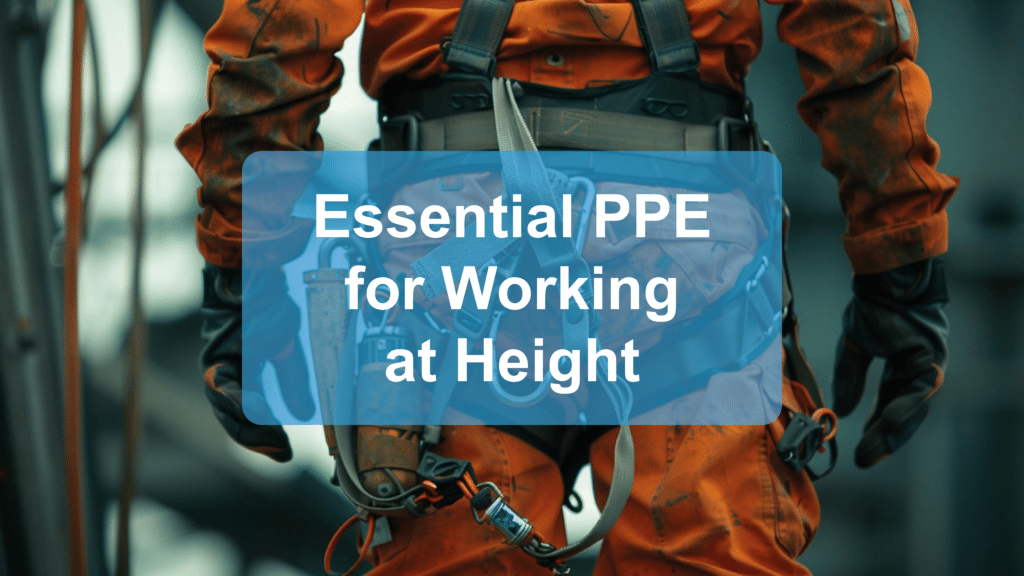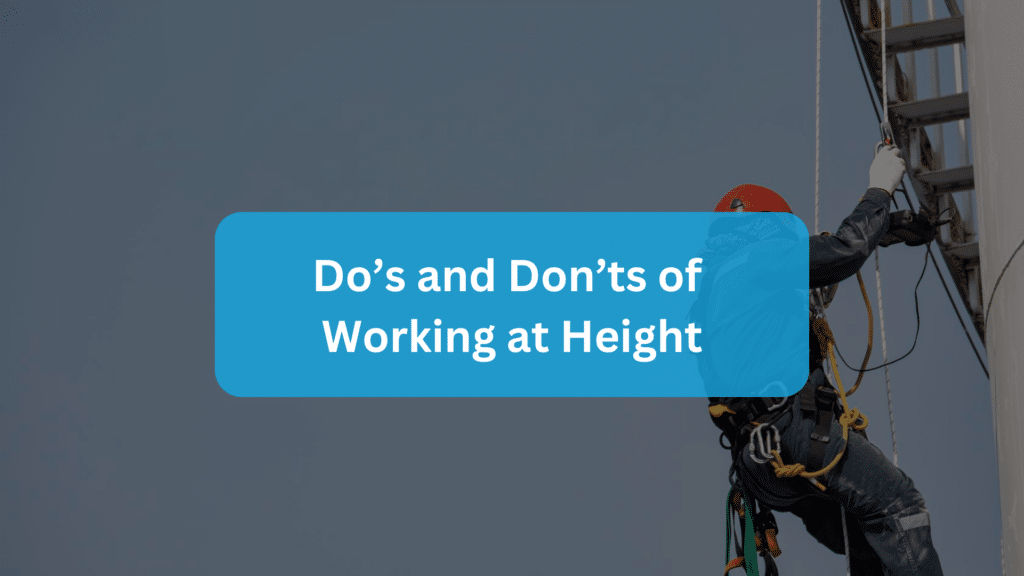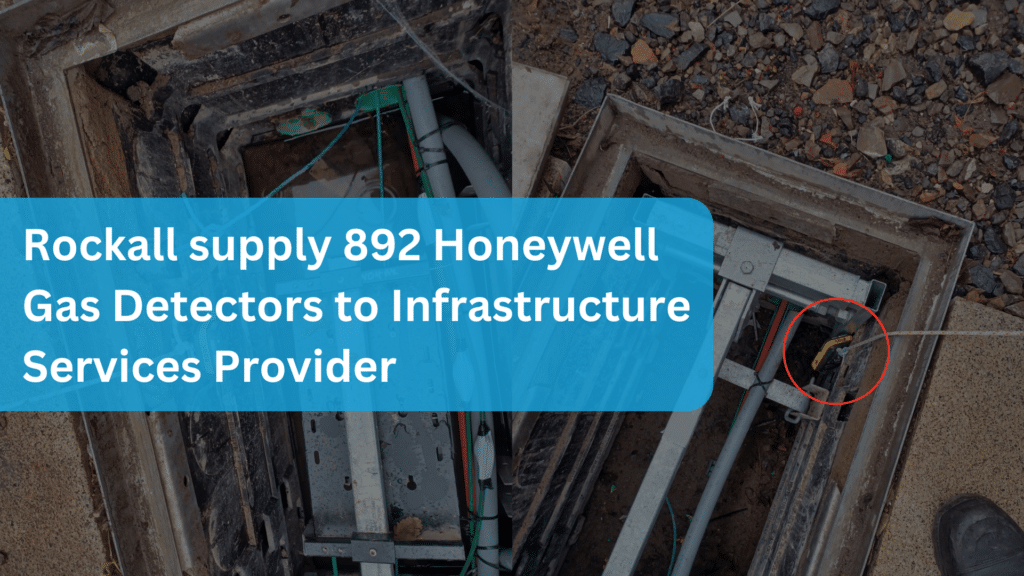
Essential Personal Protective Equipment (PPE) for Working at Height
Working at height presents significant risks, and ensuring safety requires not just skill but the right Personal Protective Equipment (PPE). Whether you’re a seasoned professional or new to the field, understanding and utilising the correct PPE can be the difference between life and death. Here’s a guide to the essential PPE required for working at height.
1. Harnesses
A harness is perhaps the most critical piece of PPE for anyone working at height. It should be a full-body harness that evenly distributes the force in the event of a fall, reducing the risk of injury. Harnesses should be selected based on the specific work environment and regularly inspected for wear and tear. Key points to consider include:
- Full-Body Harness: Distributes force across the body, protecting vital areas.
- Comfort and Fit: A harness should fit snugly but comfortably, with adjustable straps to suit different body types.
- Durability: Look for harnesses made from high-quality materials that can withstand harsh conditions.
Deluxe Comfort Front, Rear & Side D Work Positioning Harness
The RGH6 safety harness is a deluxe version of the RGH4, designed for those working at heights for longer periods, providing a thicker waist belt, extra tool loops and additional shoulder padding for extra comfort.For more information, click here: Ridgegear Rear & Side D Work Positioning Safety Harness (rockallsafety.co.uk)
2. Lanyards and Shock Absorbers
Lanyards connect the harness to an anchor point and are designed to limit the distance of a fall. There are different types of lanyards depending on the task:
- Energy-Absorbing Lanyards: These include shock absorbers that reduce the impact force on the body in case of a fall.
- Positioning Lanyards: Used to keep the worker in a stable position while working, often without the need for hands-on support.
- Adjustable Lanyards: Allow for length adjustment to suit different working conditions.
Ridgegear RGL6 Elasticated Lanyard & Shock Absorber
Designed for use when a worker is operating from a static position, this RGL6 Lanyard provides a reliable fall arrest solution.
This general-purpose lanyard is made with an elasticated body that reduces hanging slack, minimising the risk of trip hazards and entanglement.
For more information, click here: Ridgegear RGL6 Elasticated Webbing Lanyard | Rockall Safety
3. Anchorage Points
Anchorage points are critical components in a fall arrest system. They must be capable of supporting the expected load during a fall. These can be permanent fixtures like roof anchors or temporary setups like mobile anchors.
- Certified and Rated: Ensure the anchorage points are certified for the specific weight and conditions of the task.
- Placement: Anchorage should be as high as possible to minimise the distance of a potential fall.
RGAN1 Adjustable Anchor Strap
The RGAN1 offers a temporary anchor point for a single user, which can be adjusted to fit a suitable structure.
It enables the user to move safely around the structure when using the relevant height safety equipment to complete their task.
4. Helmets and Head Protection
Falling objects or impacts during a fall are significant hazards when working at height. Helmets protect against head injuries and are mandatory on many work sites.
- Chin Straps: Ensure that the helmet has a secure chin strap to keep it in place during a fall.
- Shock Absorption: Look for helmets with good internal padding to absorb impacts.
- Compatibility: The helmet should be compatible with other PPE, such as ear protection or visors.
Cresto Crown Electro Electrically Insulated Safety Helmet
The Cresto Crown Electro is an electrically insulated safety helmet that protects against electrical shock in low-voltage environments up to 1000 V (AC) and 1500 V (DC). It has no ventilation holes or conductive parts, making it ideal for electrical installations and other tasks with a risk of electrical shock.
For more information, click here: Cresto Crown Electro Electrically Insulated Safety Helmet | Rockall Safety
5. Footwear
Proper footwear is essential for maintaining stability and preventing slips, trips, and falls. Boots designed for working at height often include features like:
- Slip-Resistant Soles: To provide a firm grip on ladders, scaffolding, and other surfaces.
- Ankle Support: To prevent injuries from twists and sprains.
- Toe Protection: To protect against falling objects or accidental stubbing.
6. Gloves
Gloves are often overlooked but are crucial for maintaining a firm grip and protecting hands from rough surfaces, sharp edges, or chemical exposure.
- Grip: Ensure gloves offer a strong grip, especially in wet or oily conditions.
- Dexterity: Gloves should allow for precise movement, which is often necessary when working at height.
- Durability: Choose gloves that are tough enough to withstand abrasion and potential hazards.
7. Fall Arrest Systems
In addition to harnesses and lanyards, fall arrest systems include a variety of devices designed to stop a fall once it occurs. These systems may include:
- Retractable Lifelines: Automatically extend and retract as the worker moves, providing continuous fall protection.
- Rope Grabs: Allow workers to move up and down a vertical lifeline while being secured.
- Safety Nets: Installed below a work area to catch a worker in case of a fall.
G.Saver II 14m/20m/34m Fall Arrest Block (136kg MWL)
The G.Saver II 14m is a fall arrest block that features a rescue winch for raising or lowering a fallen person to safety, has a Maximum Weight Load of 136kg and comes in two variants.
For more information, click here: G.Saver II 14m fall arrest block (rockallsafety.co.uk)
8. Training and Proper Use
Finally, PPE is only effective if it is used correctly. Workers should undergo comprehensive training to understand how to properly wear, adjust, and maintain their equipment. Regular drills and refresher courses are also crucial in ensuring that safety protocols are followed.
Conclusion
Working at height comes with inherent risks, but with the right PPE and training, these risks can be managed effectively. Employers and workers alike should prioritise safety by ensuring that all essential PPE is not only available but also properly used. Regular inspections, continuous training, and adherence to safety standards are key components in creating a safe working environment at height.





